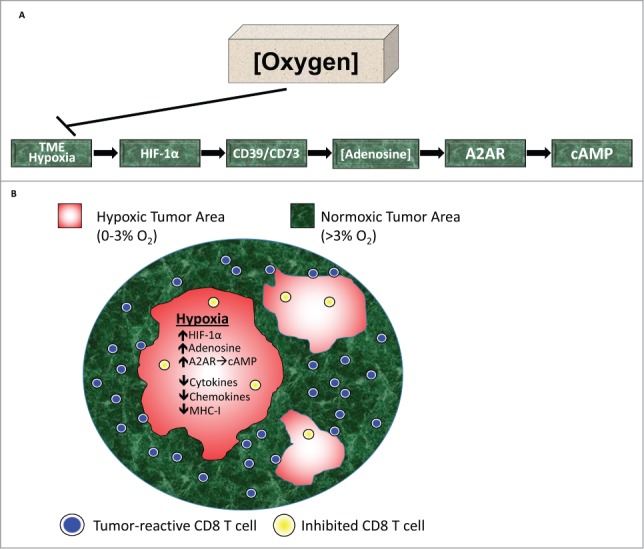Figure 1.

Oxygenation reverses hypoxia-adenosinergic immunosuppression in the TME. (A) The physiological, and possibly evolutionarily oldest, mechanism of immunosuppression of T and natural killer (NK) cells in hypoxic and extracellular adenosine-rich tissues is triggered by the local tissue hypoxia and HIF-1α-mediated upregulation of CD39/CD73 ecto-enzymes. CD73 is an ecto-5′-nucleotidase that generates extracellular adenosine, which binds to and signals through the intracellular cAMP-elevating, immunosuppressive A2AR on the surface of tumor-reactive T and NK cells. The implication of a Hypoxia→HIF-1α→[CD73]High→[Adenosine]High→A2AR/A2BR signaling axis in tumor-protective immunosuppression immediately suggests the potential therapeutic value of targeting downstream and upstream events in this pathway.5,7,8 (B) Antitumor T cells avoid hypoxic and extracellular adenosine-rich TMEs. Even when they manage to enter such tumor microenvironments (TMEs), they are inhibited by immunosuppressive hypoxia-adenosinergic signaling.
